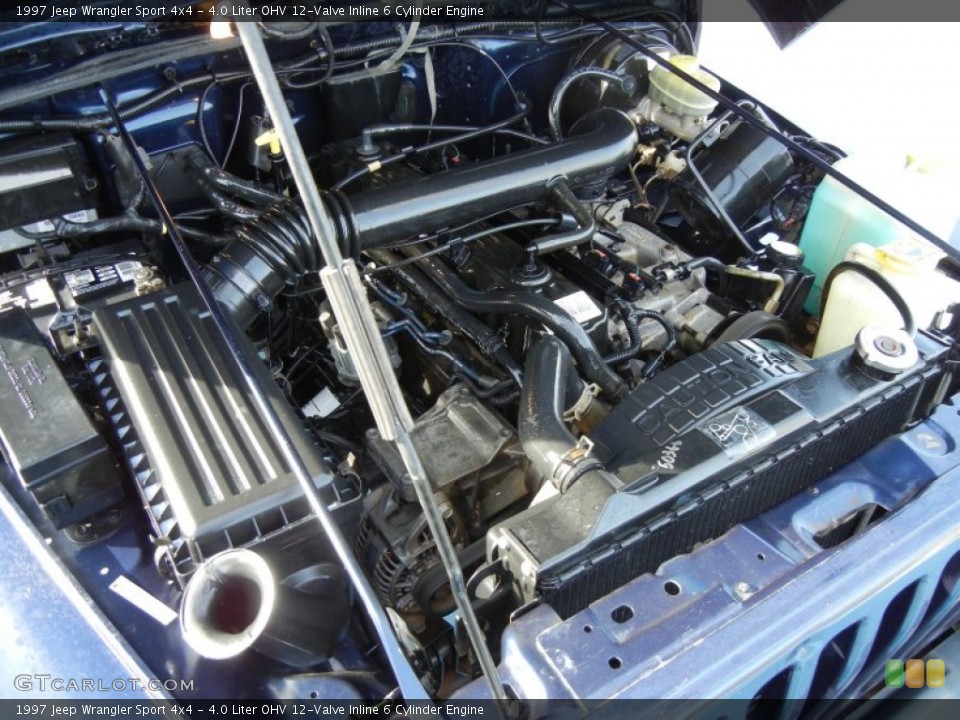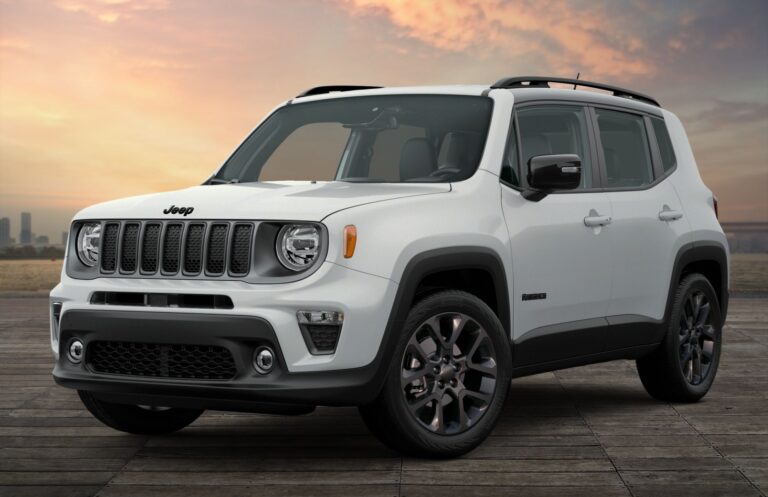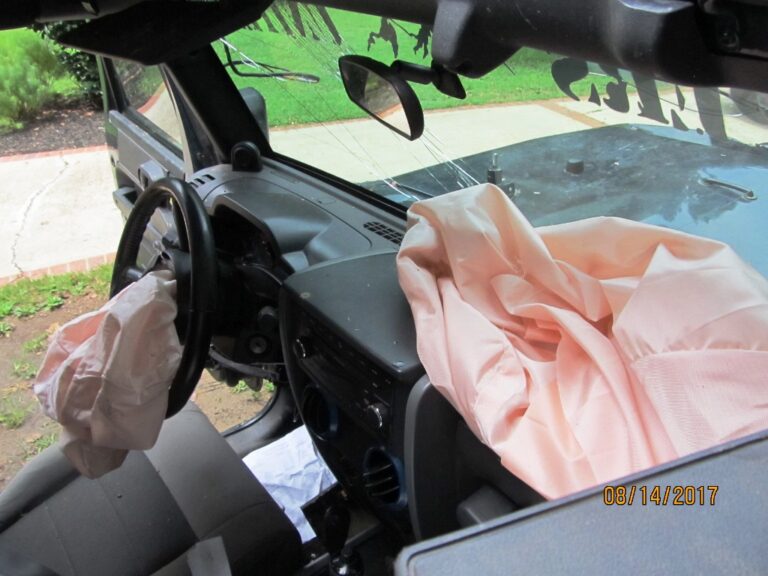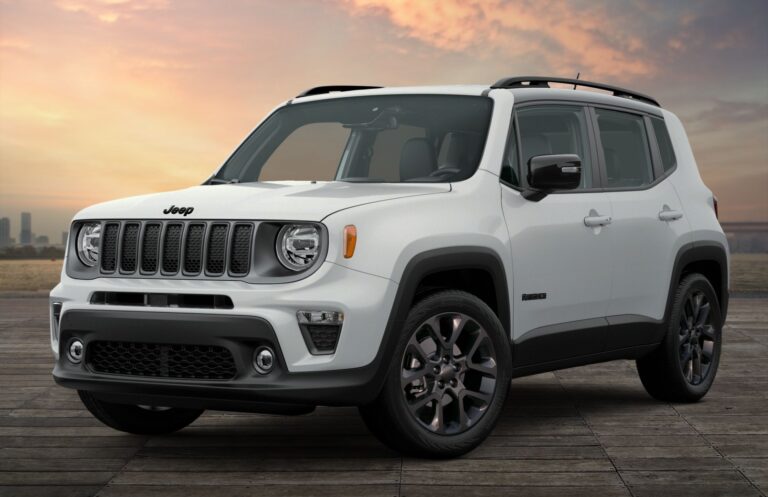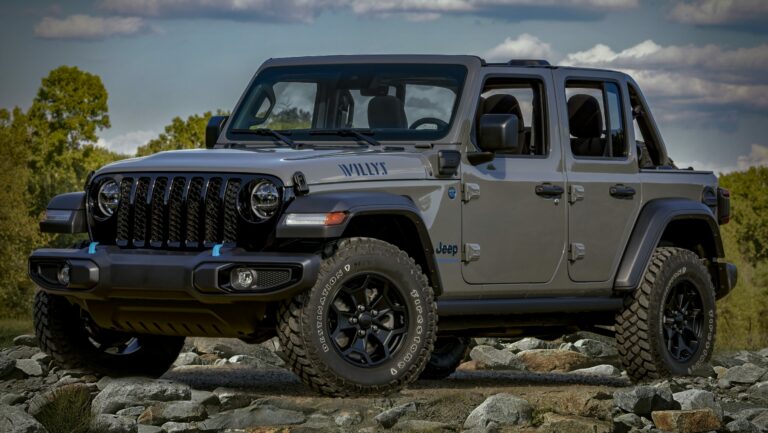1997 Jeep Wrangler 4.0 Engine For Sale: A Comprehensive Guide to Finding Your Next Powerplant
1997 Jeep Wrangler 4.0 Engine For Sale: A Comprehensive Guide to Finding Your Next Powerplant jeeps.truckstrend.com
The 1997 Jeep Wrangler TJ holds a special place in the hearts of off-road enthusiasts and casual drivers alike. Known for its rugged capability, classic styling, and undeniable charm, the TJ generation marked a significant evolution for the Wrangler. At the core of its enduring appeal, particularly for the vast majority of TJs, lies the legendary AMC 4.0-liter inline-six (I6) engine. If you’re reading this, chances are you’re on a quest for a "1997 Jeep Wrangler 4.0 Engine For Sale," whether it’s to breathe new life into a beloved rig, complete a restoration project, or embark on a custom build. This article serves as your definitive guide to understanding, sourcing, and successfully acquiring this iconic powerplant.
The 4.0L I6 engine (also known as the AMC 242) is celebrated for its incredible durability, robust torque delivery, and straightforward design, making it a favorite for those who value reliability over cutting-edge technology. Its reputation as a "bulletproof" engine means that even decades after production, there’s a strong demand for good quality units. Navigating the market for a used or remanufactured engine can be complex, but with the right knowledge, you can make an informed decision and secure the perfect heart for your Jeep.
1997 Jeep Wrangler 4.0 Engine For Sale: A Comprehensive Guide to Finding Your Next Powerplant
Why the 1997 Jeep Wrangler 4.0L Engine Stands Out
The 1997 model year marked the debut of the TJ Wrangler, and it inherited the proven 4.0L I6 engine from its Cherokee (XJ) and Grand Cherokee (ZJ) siblings. This particular iteration, featuring multi-port fuel injection (MPI) and a traditional distributor, is renowned for several key attributes:
- Unrivaled Durability: Built with a cast-iron block and cylinder head, the 4.0L is inherently tough. Many original engines have surpassed 200,000, even 300,000 miles, with proper maintenance.
- Torque-Rich Performance: Its long-stroke design provides excellent low-end torque, which is crucial for off-roading, crawling over obstacles, and pulling trailers. This characteristic makes it feel powerful even at lower RPMs.
- Simplicity and Serviceability: Unlike many modern engines, the 4.0L is relatively simple in its design, making it easier for DIY mechanics to maintain and repair. Parts are readily available and generally affordable.
- Strong Aftermarket Support: Due to its popularity, there’s a vast aftermarket for performance upgrades, replacement parts, and accessories, ensuring you can keep your engine running optimally for years to come.
- Reliable for Swaps: Its compact inline-six design makes it a popular choice for engine swaps into older Jeeps, custom builds, or as a direct replacement for failing units.
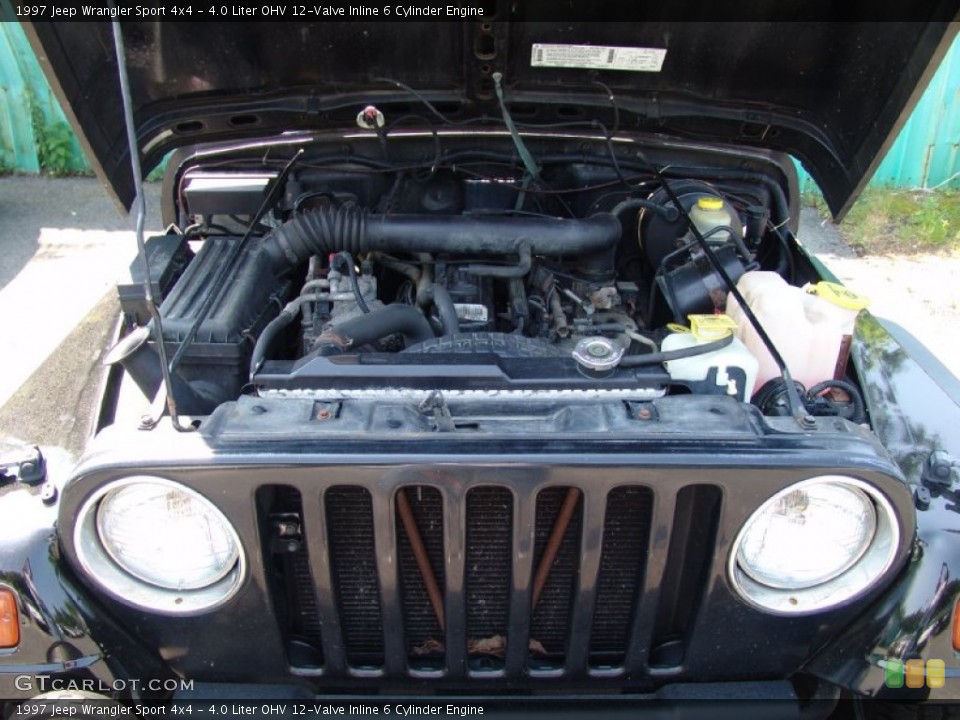
Common Reasons to Seek a Replacement 4.0L Engine
Even the most robust engines eventually wear out or suffer catastrophic failure. Here are the primary reasons individuals search for a "1997 Jeep Wrangler 4.0 Engine For Sale":
- Catastrophic Failure: Spun rod bearings, cracked cylinder heads (often from overheating), severe internal wear, or a cracked engine block can necessitate a full replacement.
- High Mileage and Wear: While resilient, extremely high mileage can lead to excessive oil consumption, low compression, persistent leaks, or excessive valvetrain noise that makes a rebuild or replacement more economical than continuous repair.
- Restoration Projects: For enthusiasts restoring a classic 1997 TJ, a fresh or rebuilt engine ensures the vehicle performs as it should and retains its value.
- Engine Swaps: Sometimes, the 4.0L is sourced to replace a smaller engine (like the 2.5L I4) in a 1997 Wrangler or even for installation into a different chassis.
- Accident Damage: While rare, severe front-end collisions can damage the engine block or critical components beyond repair.
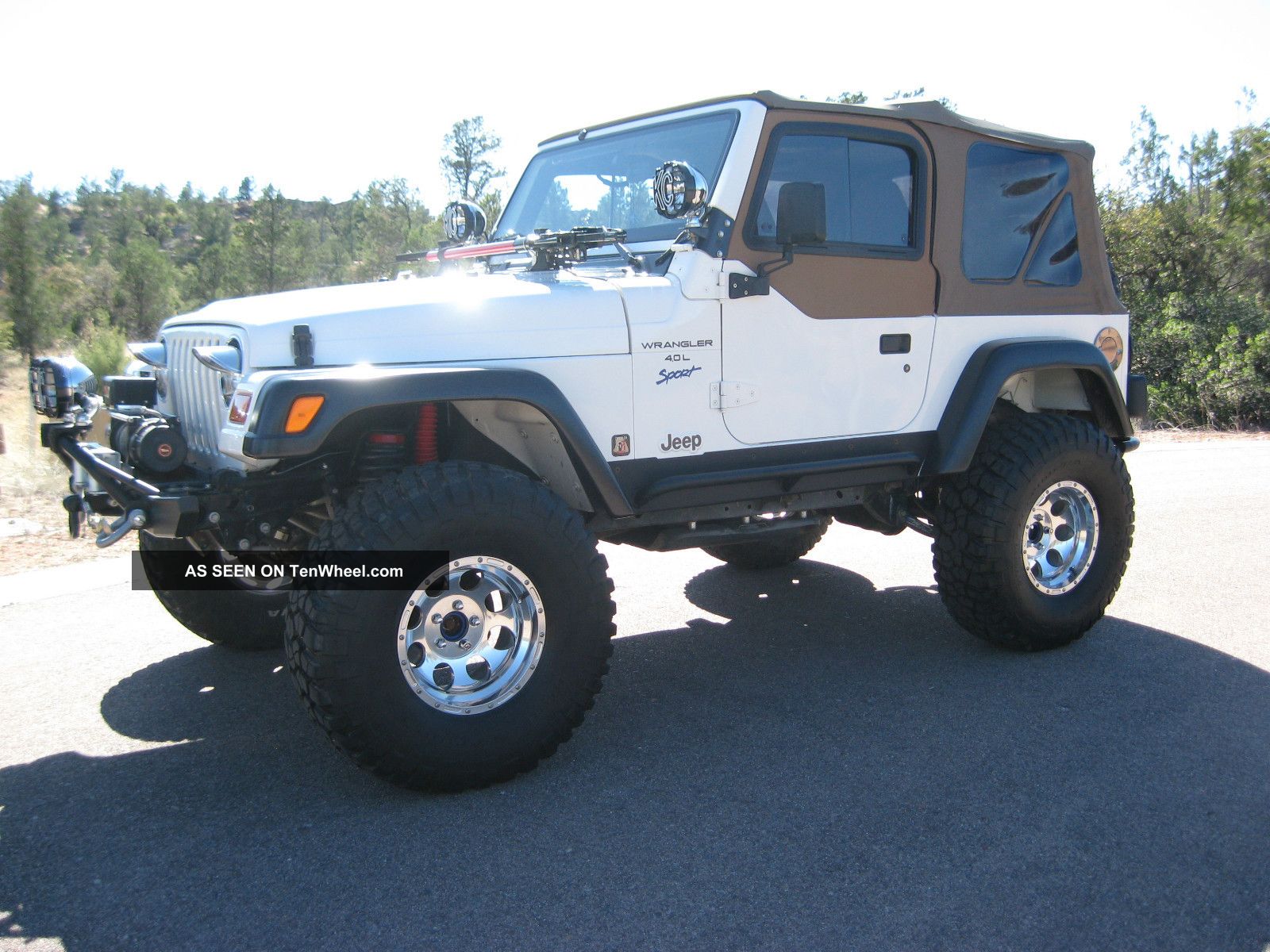
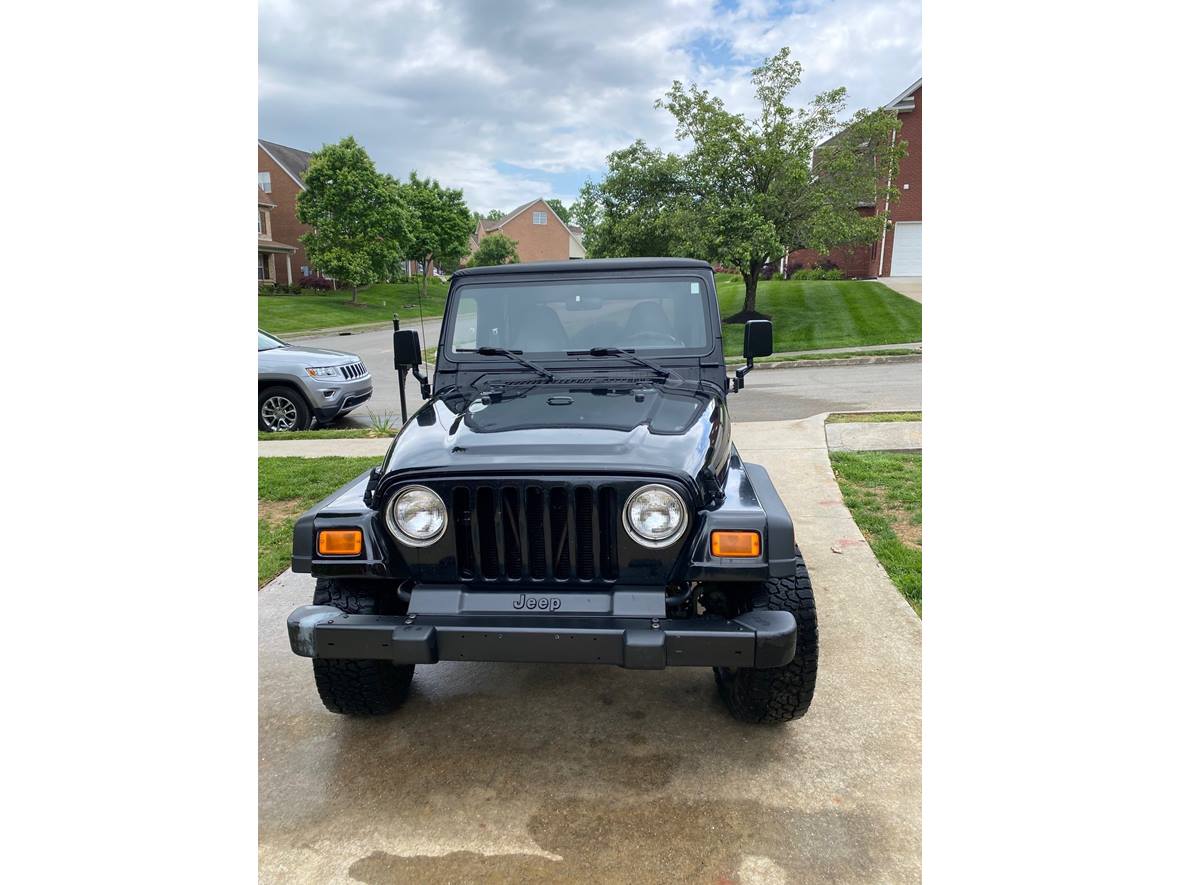
Understanding the Types of 4.0L Engines Available for a 1997 TJ
When searching for a 1997 Jeep Wrangler 4.0 engine, you’ll encounter several categories, each with its own advantages and disadvantages:
-
Used/Salvage Engines: These are engines pulled from donor vehicles, often from salvage yards or private sellers.
- Pros: Most affordable option.
- Cons: Unknown history, mileage, and internal condition. They might have hidden issues, no warranty, or a very limited one.
- Best For: Those on a tight budget who are willing to take a risk, or experienced mechanics who can inspect and potentially rebuild the engine themselves.
-
Tested Used Engines: Similar to salvage engines, but the seller claims to have performed basic tests (e.g., compression, leak-down, oil pressure, or verified it ran before removal).
- Pros: Slightly more assurance than a completely "as-is" unit, often comes with a short warranty (30-90 days).
- Cons: Still a used engine with wear; tests might not reveal all potential problems.
- Best For: A cost-effective direct replacement for a daily driver, with slightly more peace of mind.
-
Remanufactured/Rebuilt Engines: These engines have been completely disassembled, inspected, machined, and reassembled with new or reconditioned components (pistons, rings, bearings, seals, gaskets, valves, etc.) to meet or exceed OEM specifications.
- Pros: Closest to a new engine in terms of performance and lifespan; typically come with a comprehensive warranty (1-3 years, unlimited mileage).
- Cons: Significantly more expensive than used options.
- Best For: Anyone seeking long-term reliability, peace of mind, or those undertaking a high-quality restoration.
-
New Crate Engines: While less common for the vintage 4.0L, some specialized aftermarket companies or performance shops might offer "new" or highly customized versions of the 4.0L.
- Pros: Brand new components, often with performance enhancements.
- Cons: Most expensive option; might not be a direct "plug-and-play" replacement for a stock 1997 TJ without modifications.
- Best For: Serious performance builds, ultimate reliability, or those with a substantial budget.
Understanding Long Block vs. Short Block:
- Long Block: Includes the engine block, crankshaft, pistons, connecting rods, camshaft, and cylinder head(s). This is the most common and recommended option for a replacement, as it’s typically ready to accept your existing accessories.
- Short Block: Only includes the engine block, crankshaft, pistons, and connecting rods. You’ll need to transfer your existing cylinder head(s) and all other components. This is usually only chosen if your cylinder head is known to be in perfect condition.
Key Considerations When Buying a 1997 Jeep Wrangler 4.0L Engine
Purchasing an engine is a significant investment. Here’s what you need to scrutinize:
- Source Reliability: Buy from reputable salvage yards, specialized Jeep parts dealers, or well-established engine remanufacturers. Check online reviews and ask for references. Avoid sellers with no established history.
- Warranty: This is paramount, especially for used or remanufactured engines. Understand what the warranty covers (parts, labor, duration) and what voids it.
- Mileage and History (for used engines): If possible, get details on the donor vehicle, including its mileage and why it was salvaged. A video of the engine running before removal is a huge plus.
- Condition Inspection:
- Visual: Look for cracks, excessive rust, signs of major oil leaks, or physical damage. Check for sludge under the oil cap or on the dipstick, which could indicate poor maintenance.
- Mechanical (if possible): Ask for compression test results (all cylinders should be within 10-15% of each other), oil pressure readings (if tested), and proof it holds coolant without mixing with oil.
- Completeness: Confirm what’s included. Does it come with the intake manifold, exhaust manifold, distributor, sensors, fuel rail, and other accessories? Often, it’s just the long block, and you’ll need to swap your existing components. For a 1997 TJ, ensure it’s a distributor-style engine, not the later coil-on-plug design.
- Shipping and Logistics: Engines are heavy. Factor in crating costs, freight shipping fees, and delivery logistics (do you need a liftgate service?).
- Core Charge: Many sellers of remanufactured or tested used engines will charge a "core fee" that is refunded when you return your old, rebuildable engine. Understand this policy.
The Buying Process: A Step-by-Step Guide
- Define Your Needs & Budget: Determine if you need a budget-friendly used engine or a more expensive, warrantied remanufactured unit. What accessories do you need included?
- Research Sellers: Use online marketplaces (eBay, Craigslist), specialized Jeep forums, dedicated engine suppliers, and local salvage yards. Compare prices, warranties, and seller reputations.
- Ask Detailed Questions: Don’t be afraid to ask about mileage, history, testing procedures, what’s included, shipping costs, and warranty specifics.
- Request Documentation: Ask for photos, videos, test results (compression, oil pressure), and copies of the warranty agreement.
- Negotiate: Don’t be afraid to negotiate the price, especially for used engines.
- Secure Payment: Use secure payment methods. For larger purchases, consider using a credit card for buyer protection or a reputable escrow service if buying from a private party.
- Arrange Shipping/Pickup: Confirm shipping details, tracking, and insurance. If picking up, arrange for appropriate transportation.
- Inspect Upon Arrival: Before signing for delivery, visually inspect the crate and engine for any shipping damage. Document any issues with photos.
- Pre-Installation Checks: Before dropping it into your Jeep, perform basic checks: rotate the crankshaft to ensure it’s not seized, inspect for external leaks, and swap any necessary accessories from your old engine. Replace common wear items like the rear main seal, oil pan gasket, and valve cover gasket while the engine is out.
Installation Tips and Post-Installation Care
- Professional vs. DIY: While the 4.0L is straightforward, engine swaps are complex. If you’re not an experienced mechanic, consider professional installation.
- New Gaskets and Seals: Always use new gaskets and seals (oil pan, valve cover, intake/exhaust manifold, rear main seal, etc.) during installation. It’s cheap insurance against leaks.
- New Fluids and Filters: Fill with fresh engine oil, coolant, and a new oil filter.
- Check All Connections: Double-check all electrical connections, vacuum lines, fuel lines, and hoses before starting.
- Break-in Procedure: If installing a remanufactured engine, follow the manufacturer’s break-in procedure carefully. This often involves specific oil changes and driving patterns for the first few hundred miles.
- Regular Maintenance: Once installed, stick to a strict maintenance schedule (oil changes, filter replacements, fluid checks) to ensure the longevity of your "new" engine.
Potential Challenges and Solutions
- Buying a "Lemon": Despite best efforts, a faulty engine can slip through. Rely on your warranty! Document all issues immediately and contact the seller.
- Shipping Damage: Inspect the crate and engine thoroughly upon arrival. Refuse delivery if there’s significant visible damage, or note it clearly on the shipping manifest.
- Compatibility Issues: While the 4.0L is generally consistent, minor sensor or accessory differences can exist between model years or donor vehicles (e.g., from an XJ vs. a TJ). Always double-check part numbers and be prepared to swap components from your original engine.
- Unexpected Costs: Factor in ancillary costs like new fluids, gaskets, spark plugs, wires, and potentially a new water pump or thermostat. Professional installation labor can add significantly to the total.
Practical Advice and Actionable Insights
- "Buy the seller, not just the engine." A reputable seller with good communication and a solid warranty is more valuable than the cheapest price.
- "A good warranty is worth its weight in gold." This cannot be stressed enough. It’s your primary protection against unforeseen issues.
- "Factor in all costs." Don’t just look at the engine price. Include shipping, core charges, new fluids, gaskets, and potential professional installation.
- "Do your homework." Research common issues, compatibility, and best practices for the 4.0L engine before you start shopping.
- "Patience pays off." Don’t rush into a purchase. The right engine at the right price with the right warranty will come along.
Price Table: 1997 Jeep Wrangler 4.0 Engine For Sale (Estimated)
| Engine Type/Condition | Estimated Price Range (USD) | Key Features/Notes | Ideal For |
|---|---|---|---|
| Used (As-Is) | $500 – $1,500 | Pulled from salvage, unknown history/mileage, no warranty, core charge often applies. Highest risk. | Budget builds, core for rebuilding, experienced mechanics |
| Used (Tested/Good) | $1,200 – $2,500 | Tested compression/oil pressure, verified running condition, typically 30-90 day warranty. Moderate risk. | Direct replacement for daily driver, DIY enthusiasts |
| Remanufactured | $2,500 – $4,000+ | Fully rebuilt to OEM specs, new internal components, 1-3 year warranty. Lowest risk. | Long-term reliability, high-quality restorations, peace of mind |
| New Crate Engine | $4,000 – $6,000+ | Brand new assembly (rare for stock 4.0L, often aftermarket/performance). | High-performance builds, ultimate reliability, unlimited budget |
| Core Charge | $200 – $500 | Refundable deposit for return of old engine. | Applies to most remanufactured and some used engines |
| Shipping Costs | $200 – $800+ | Varies significantly by distance, carrier, and liftgate service needs. | Additional cost for non-local purchases |
| Installation Labor | $800 – $2,000+ | If professional installation is required. | Cost for skilled labor |
Note: Prices are estimates and can fluctuate based on market demand, location, seller, and specific engine condition/inclusions. Always get a detailed quote.
Frequently Asked Questions (FAQ)
Q: Is the 4.0L engine from a Grand Cherokee (ZJ) or Cherokee (XJ) compatible with a 1997 Wrangler TJ?
A: Yes, the long block (engine block, head, and internals) is largely the same and physically interchangeable. However, you will need to swap over your TJ’s specific oil pan, engine mounts, intake manifold, exhaust manifold, accessory brackets, sensors, and distributor to ensure proper fitment and electronic compatibility.
Q: What’s the typical lifespan of a 4.0L engine?
A: With proper and consistent maintenance, including regular oil changes and addressing minor issues promptly, many 4.0L engines can easily exceed 200,000 to 300,000 miles.
Q: What are common problems to look out for with the 4.0L engine?
A: Common issues include rear main seal leaks (a persistent nuisance but usually not catastrophic), cracked exhaust manifolds, occasional lifter noise (often due to poor oil pressure or worn lifters), and oil filter adapter leaks.
Q: Should I buy a long block or a short block?
A: For most replacement scenarios, a long block is recommended. It includes the cylinder head, which is often a source of issues or wear. A short block is only suitable if you are certain your existing cylinder head is in excellent condition and you plan to reuse it.
Q: How can I verify the engine’s condition before buying, especially if I can’t see it in person?
A: Request detailed photos and videos, especially of it running if possible. Ask for documentation like compression test results (all cylinders should be within 10-15% of each other) and oil pressure readings. Inquire about the donor vehicle’s history and mileage.
Q: Are performance upgrades available for the 4.0L?
A: Absolutely! The 4.0L has a strong aftermarket. You can find upgrades like improved cylinder heads, camshafts, intake manifolds, throttle bodies, and even forced induction (superchargers) to boost performance. However, for a standard replacement, these aren’t necessary.
Conclusion
The 1997 Jeep Wrangler 4.0L engine remains a cornerstone of the Jeep community, a testament to its robust design and unwavering reliability. Acquiring a replacement engine for your TJ is a significant undertaking, but with the comprehensive information provided in this guide, you are well-equipped to make an informed decision. By understanding the different types of engines available, knowing what questions to ask, and prioritizing reputable sellers with strong warranties, you can confidently navigate the market. A well-chosen and properly installed 4.0L engine will not only restore your 1997 Jeep Wrangler to its former glory but ensure it continues to conquer trails and roads for many years to come.
